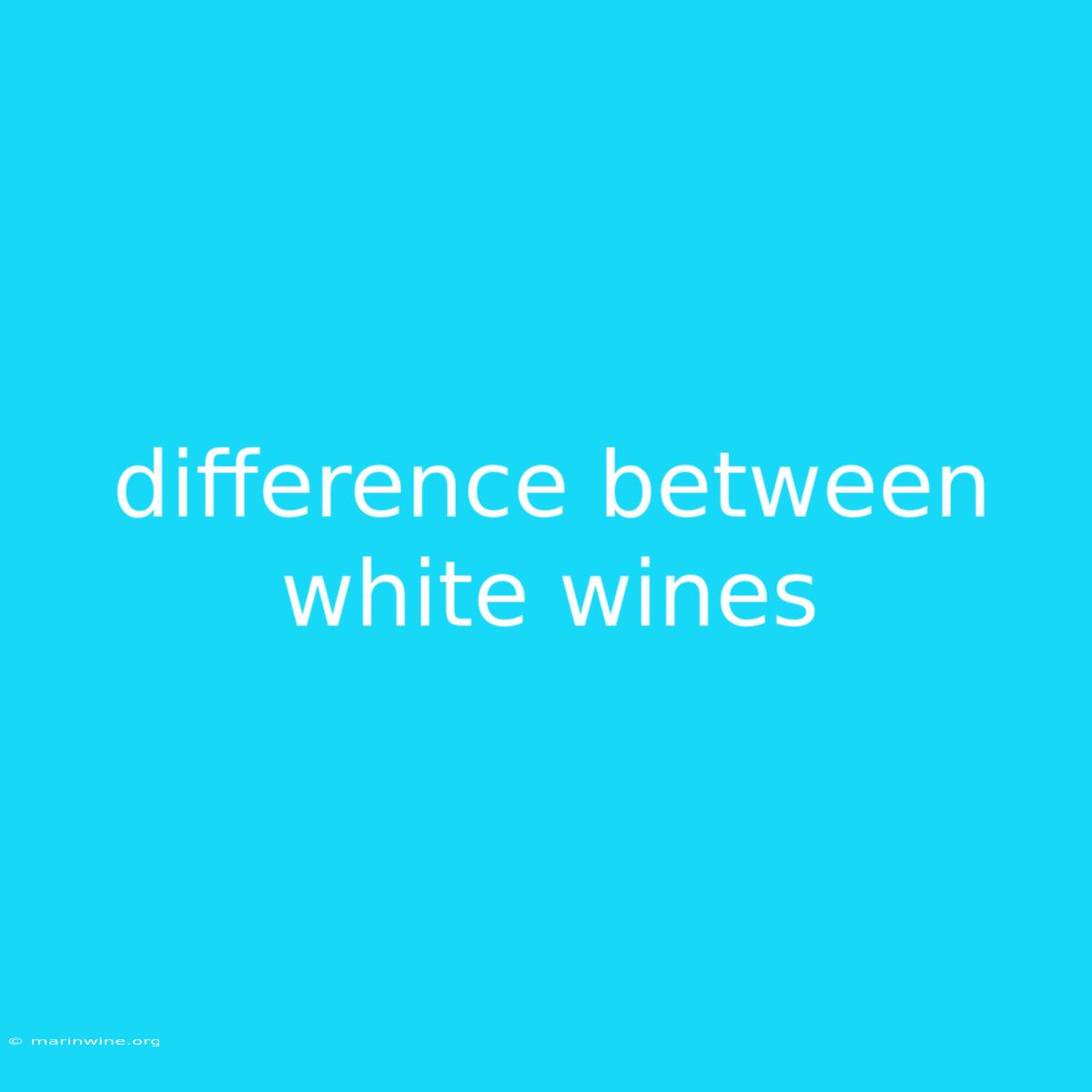Uncorking the Secrets: A Deep Dive into the Difference Between White Wines
Have you ever wondered what makes a Sauvignon Blanc different from a Chardonnay? The world of white wines is as diverse and intriguing as the grapes that make them. From crisp and refreshing to buttery and complex, there's a white wine for every palate and occasion. Let's delve into the fascinating world of white wine varieties and explore what makes them unique.
Why It Matters: Understanding the nuances of white wine varieties allows you to make more informed choices when selecting your next bottle. You'll be able to appreciate the subtle differences in flavor, aroma, and texture, leading to a richer and more enjoyable wine experience.
Key Takeaways of White Wine Varieties
| Variety | Key Characteristics |
|---|---|
| Chardonnay | Full-bodied, buttery, often oaked, versatile |
| Sauvignon Blanc | Crisp, zesty, grassy notes, high acidity |
| Riesling | Sweet to dry, floral, fruity, high acidity |
| Pinot Grigio | Light-bodied, dry, crisp, refreshing |
| Viognier | Aromatic, floral, peachy, full-bodied |
| Gewürztraminer | Intensely aromatic, floral, spicy, off-dry |
White Wine Varieties
Chardonnay: Known for its versatility and adaptability, Chardonnay can range from lean and crisp to rich and buttery. Oak aging adds complexity and notes of vanilla, toast, and spice. Chardonnay pairs well with seafood, poultry, and cheeses.
Sauvignon Blanc: This popular variety is characterized by its crisp acidity and vibrant fruit flavors. Think citrus, green apple, and grassy notes. Sauvignon Blanc shines with salads, seafood, and light appetizers.
Riesling: Aromatic and versatile, Riesling can be produced in a range of sweetness levels, from bone-dry to lusciously sweet. It showcases floral, fruity, and mineral notes. Riesling pairs well with Asian cuisine, spicy foods, and fruit desserts.
Pinot Grigio: This Italian favorite is known for its light body, crisp acidity, and refreshing character. Expect notes of pear, green apple, and citrus. Pinot Grigio is a versatile choice for aperitifs, salads, and seafood.
Viognier: With its rich, full-bodied style, Viognier offers an array of aromatic notes like peach, apricot, and honeysuckle. Its intensity pairs well with spicy cuisine, roasted meats, and hearty cheeses.
Gewürztraminer: This intensely aromatic variety is known for its floral, spicy, and slightly sweet character. Expect notes of lychee, rose, and ginger. Gewürztraminer pairs well with spicy Asian dishes, fruit salads, and desserts.
The Impact of Terroir
The region where grapes are grown, known as terroir, plays a significant role in the final character of the wine. Soil type, climate, and vineyard practices all contribute to the unique expression of each grape variety. For example, a Chardonnay from Burgundy, France, will differ in flavor profile from a Chardonnay from California.
FAQ
Q: How can I tell the difference between a sweet and a dry white wine? A: Dry white wines have less residual sugar and are typically crisp and refreshing. Sweet white wines have a noticeable sweetness, often described as honeyed or fruity.
Q: What are the best white wines for beginners? **A: ** Sauvignon Blanc, Pinot Grigio, and Riesling are good choices for beginners due to their refreshing acidity and easy-to-drink styles.
Q: How should I store my white wine? A: White wines should be stored in a cool, dark place, ideally around 55°F (13°C).
Q: What are some good pairings for white wine? A: White wines pair well with seafood, poultry, salads, cheeses, and Asian cuisine.
Tips for Enjoying White Wine
- Chill before serving: Most white wines are best enjoyed chilled.
- Serve in appropriate glassware: White wine glasses are designed to enhance the aromas and flavors.
- Use a wine opener: A corkscrew is essential for opening wine bottles.
- Pay attention to the aroma: White wine aromas can be subtle or intense. Take a moment to appreciate the bouquet.
- Taste and enjoy: Don't be afraid to experiment and discover your favorite white wine varieties!
Summary of White Wine Varieties
Exploring the world of white wine varieties reveals a fascinating spectrum of flavors and aromas. Understanding the key characteristics of each variety can elevate your wine appreciation and enhance your enjoyment of this versatile beverage.
Closing Message: As you delve deeper into the world of white wines, remember to embrace the diversity of flavors, regions, and styles. The journey of discovery is just as rewarding as the final sip. Cheers!

